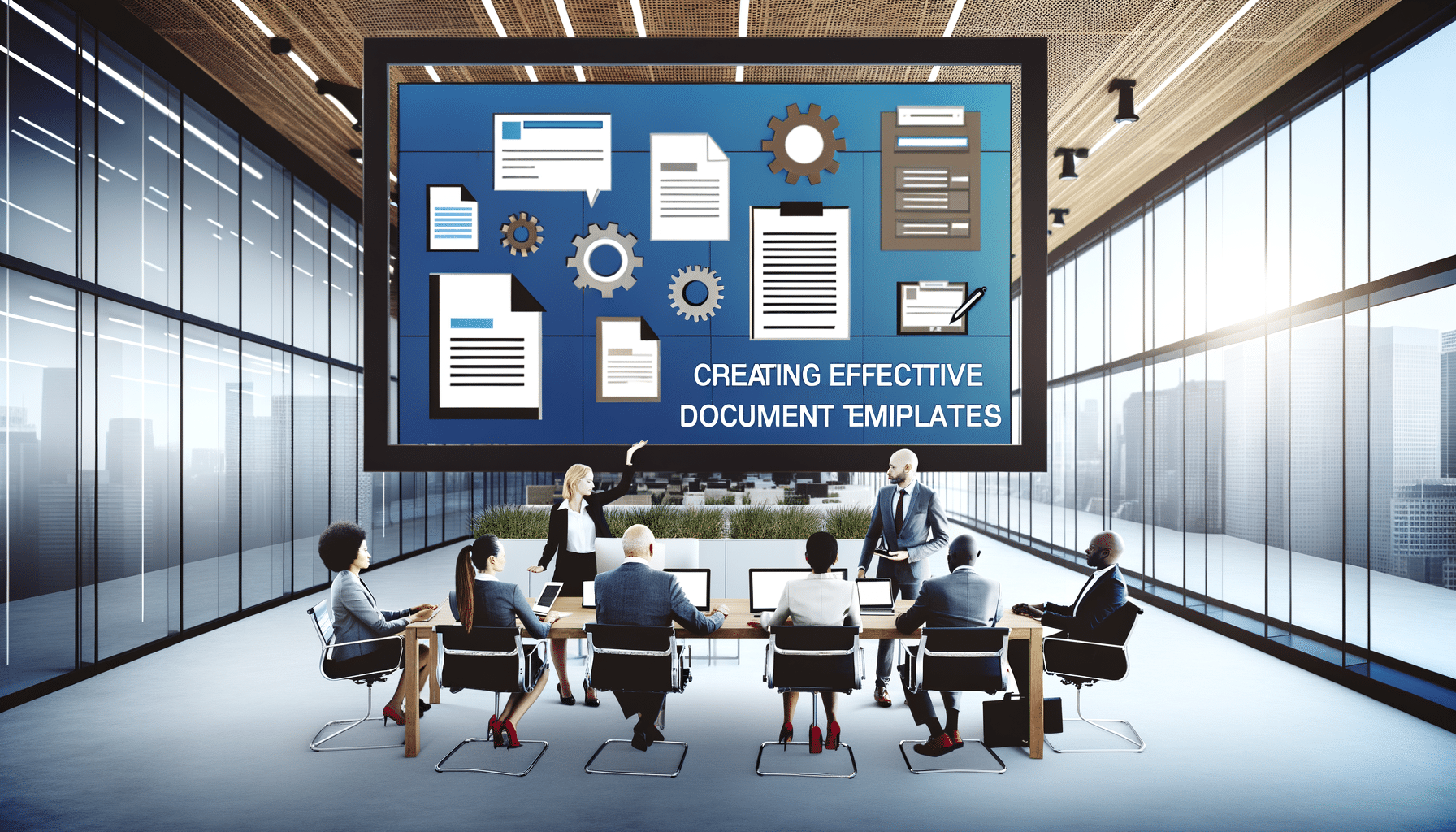- Productivity
- November 17, 2024
Creating Effective Document Templates

Transforming Record Management with Document Templates
In today’s fast-paced digital landscape, businesses and organizations are constantly seeking ways to optimize operations and enhance productivity. One often-overlooked element that can significantly contribute to organizational efficiency is the humble document template. As the founder of RecordsKeeper.AI, I am excited to share insights on how document templates can be harnessed to streamline tasks and improve business outcomes.
Understanding the Importance of Document Templates
Document templates are pre-designed formats that provide a consistent framework for creating various types of documents. From contracts to invoices, and reports to request forms, the utility of document templates spans across departments—making them indispensable tools for improving operational efficiency.
Key benefits of using document templates include:
The Role of Document Templates in Enhancing Efficiency
One of the biggest challenges I’ve witnessed in record management is the wasted time and resources spent on repetitive document creation. Document templates serve as a robust solution, addressing crucial aspects of efficiency:
Automating Tedious Tasks
By using templates, businesses can automate routine document generation. This not only frees up individual bandwidth but also allows teams to focus their expertise on strategic tasks that drive business growth rather than repetitive administrative work.
Facilitating Collaborations
Document templates ensure consistency and cohesiveness when multiple individuals are involved in document creation. This is especially beneficial for remote teams where maintaining uniformity becomes challenging. Templates offer a common framework that all team members can adhere to, simplifying collaborations.
Best Practices for Developing Effective Document Templates
While document templates are powerful tools, developing them requires thoughtful planning and execution. Here are some best practices I recommend:
Identify Common Document Types
Initially, identify the types of documents that recur most often within your organization. This could range from client proposals to internal memos. Prioritizing these will ensure you tackle document categories that have an immediate impact on productivity.
Develop with Flexibility in Mind
Design templates that can adapt to slight variations without necessitating major format alterations. This adaptability is crucial in scenarios where documents need to cater to different purposes or audiences while maintaining core consistency.
Incorporate Automation and AI Tools
Take advantage of automation tools and artificial intelligence to integrate dynamic data fields within your templates. This allows the incorporation of real-time data, delivering personalized experiences without manual intervention.
Navigating Compliance with Document Templates
Compliance management remains a critical aspect of record-keeping, and document templates are no exception. In many regulatory environments, the need for well-documented processes and historical records is non-negotiable. Here’s how templates facilitate compliance:
Standardization: With built-in compliance frameworks, templates ensure that all necessary legal clauses and regulatory requirements are met consistently across documents.
Audit Trails: Design template systems that automatically log version histories and changes for easy reference during audits, bolstering transparency and accountability.
Conclusion
Document templates can revolutionize record management, aligning with a broader strategy of enhancing productivity. By reducing manual workload, minimizing errors, and ensuring compliance, they lay a strong foundation for organizations to operate efficiently and focus on growth-driving activities.
For those interested in accelerating their document management processes, exploring the potential of RecordsKeeper.AI could be your next step. By integrating the power of AI and blockchain, RecordsKeeper.AI transforms record management, bringing unparalleled security, compliance, and ease of use. Stay tuned for more insights as I continue to delve into how innovative technologies can elevate your business journey. Feel free to reach out or follow my updates for more entrepreneurial and tech insights!
Toshendra Sharma is the visionary founder and CEO of RecordsKeeper.AI, spearheading the fusion of AI and blockchain to redefine enterprise record management. With a groundbreaking approach to solving complex business challenges, Toshendra combines deep expertise in blockchain and artificial intelligence with an acute understanding of enterprise compliance and security needs.
Related Posts

Quick Tips for Better Record Search Results
Improve your record search success rate with these strategies.
- November 17, 2024

Daily Record Keeping Habits That Save Hours Weekly
Small changes in your daily routine that lead to major time savings.
- November 16, 2024
Archives
- January 2025
- December 2024
- November 2024
- October 2024
- September 2024
- August 2024
- July 2024
- June 2024
- May 2024
- April 2024
- March 2024
- February 2024
- January 2024
- December 2023
- November 2023
- October 2023
- September 2023
- August 2023
- July 2023
- June 2023
- May 2023
- April 2023
- March 2023
- February 2023
- January 2023
- December 2022
- November 2022
- October 2022
- September 2022
Want to get more content like this?
Signup to directly get this type of content to your inbox!!
Latest Post
Document Control for Equipment Maintenance
- January 20, 2025
Managing Records for Multiple Clients
- January 19, 2025
Handling Conference Documentation
- January 18, 2025
Setting Up Department Record Reviews
- January 17, 2025





